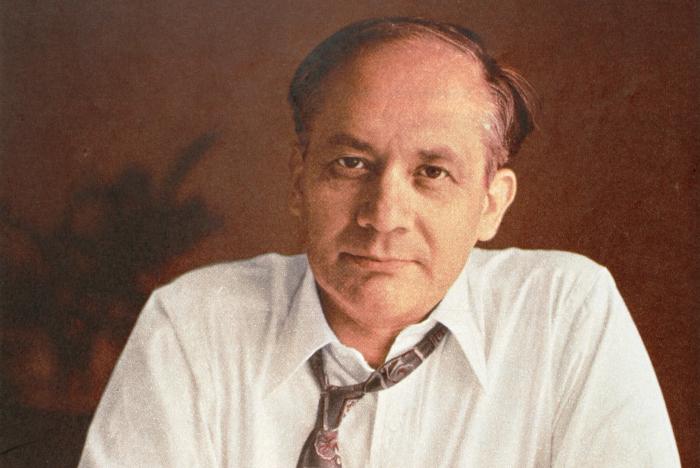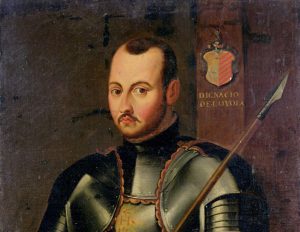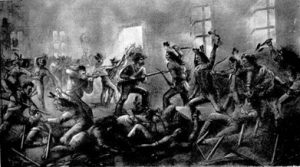
At a quiet New York cemetery in 1959, a handful of people stand around a fresh grave as a casket is lowered. Any passerby seeing the small somber ceremony might assume that the body belonged to a person of little significance. In fact, this casket carries the body of a man who is responsible for one of the largest shifts in international law in human history. Without his efforts, it is likely that the gravest crime mankind has ever committed and continues to commit would still be a crime without a name.
By the end of World War II, the Nazi regime had orchestrated the murder of over 17 million civilians in concentration camps throughout Europe. 1 Despite these egregious atrocities, no one at the time referred to the Holocaust as an act of genocide, not because it was not an appropriate descriptor, but because Raphael Lemkin had not yet coined the word and defined the crime for the world. The outcome of his personal crusade to encode ‘Genocide’ in an internationally recognized and binding Convention to which the US would sign on became his legacy (the US signed on decades after his passing).
Lemkin was born to a Polish-Jewish family in 1900 in a small village called Bezwodne in what was then The Russian Empire. Home schooled by his mother, he proved to be a brilliant scholar. By the time he received his undergraduate degree from Jan Kazimierz University he had learned over 14 languages and showed strong aptitude and interest in international law. After a career as a prosecutor in Poland, he was forced to flee to Sweden to evade capture by the Nazi forces in 1939. However 49 of his relatives were tortured and/or killed, drops in the ocean of inhumanity that was the Holocaust. 2

After fleeing the Nazi invasion, Lemkin eventually made his way to the United States. There he became a prolific professor, lecturing at the law school at Duke University in 1941 and the School of Military Government at the University of Virginia in 1942. He also served as an adviser to the United States War Department specializing in international law. 3
The world first became aware of Lemkin’s concept of genocide after the publication of what would arguably be his most important work, Axis Rule in Occupied Europe, in 1944. Primarily a legal analysis of the behavior of Nazi Germany in occupied territories during World War 2, the book also contained a full definition of the crime Lemkin dubbed “genocide.” 4 After this publication, Lemkin dedicated the rest of his life to getting the international community to acknowledge genocide as a crime under international law.
Lemkin drafted a resolution for a treaty which would officially ban genocide under international law. He then took his resolution on the road, presenting it to any nation which would hear him, hoping to garner enough support to endorse a convention on the subject. After years of lobbying the international community, The United States UN delegation agreed to present Lemkin’s resolution to the General Assembly. Dubbed “The Convention on the Prevention and Punishment of the Crime of Genocide,” the resolution was adopted on December 9th, 1948. It would be another 3 years before enough countries signed on the the convention to make it enforceable. Much to Lemkin’s dismay, The United States was not one of the first 20 signatories. 5

Lemkin dedicated the rest of his life to lobbying those nations which had not yet signed onto the convention, with the United States being his primary target. He invested every moment of his time and every cent of his modest wealth to landing that particular white whale. He eventually died of a heart attack, impoverished, unemployed, and underappreciated, in 1959. His funeral was a small affair, reportedly only attended by 7 people. 6 Yet, today, the is no Law School, no class that teaches Human Rights, nor any conversation of World War II and any of the subsequent Genocides that does not mention his name. More importantly, the Convention provided some tools to prevent or punish such cases.
The greater legacy of his life’s work would not be realized until several decades after Lemkin’s death. The United States would eventually sign the Genocide Convention, but not until 1988. The international community would eventually convict a man of the crime Lemkin coined, but not until the International Criminal Tribunal for Rwanda in 1998 which found Jean-Paul Akayesu guilty of the Rwandan genocide. Three years after that, Radislav Krstic was similarly convicted for the murder of 8,000 Bosnian Muslims in Yugoslavia. 7 Though he died nearly 40 years too early to see the fruits of his labor truly flourish, we can hope that his soul finds solace in the fact that, thanks to him, these heinous actions have a name and are viewed the world over as being among the worst crimes humanity has ever known. Eradicating the crime of genocide still eludes us but at least accountability is now more widespread around the world. 8
- Donald Niewyk and Francis R. Nicosia, The Columbia Guide to the Holocaust (New York: Columbia University, 2000), 43. ↵
- Raphael Lemkin and Donna-Lee Frieze, Totally Unofficial: The Autobiography of Raphael Lemkin (New Haven: Yale University Press, 2013). ↵
- Robert Bliwise, “The Man Who Criminalized Genocide,” Duke Magazine, November 14, 2013, http://dukemagazine.duke.edu/article/man-who-criminalized-genocide . ↵
- Rafael Lemkin, Axis Rule in Occupied Europe: Laws of Occupation, Analysis of Government, Proposals for Redress, (Washington D.C.: Carnegie Endowment for International Peace, Department of International Law, 1944) pg. 79. ↵
- Raphael Lemkin and Donna-Lee Frieze, Totally Unofficial: The Autobiography of Raphael Lemkin (New Haven: Yale University Press, 2013). ↵
- Jay Winter, “Prophet Without Honors” The Chronicle, June 3, 2013, https://www.chronicle.com/article/Raphael-Lemkin-a-Prophet/139515 . ↵
- Robert Bliwise, “The Man Who Criminalized Genocide,” Duke Magazine, November 14, 2013, http://dukemagazine.duke.edu/article/man-who-criminalized-genocide . ↵
- United Nations, “Convention on the Prevention and Punishment of the Crime of Genocide,” United Nations Treaty Collection, 78:1, 1021 (9 December 1948), New York: United Nations, 1951, 278-311. ↵



196 comments
Aneesa Zubair
The beginning of your article drew my attention with its somber mood. It does a great job of contrasting the simplicity of Lemkin’s funeral with the significance of his life. Coining a word like “genocide” might not seem like a huge accomplishment, but in reality, giving this action a name allowed it to be addressed as a type of crime under international law. Unfortunately, genocide has not been eliminated completely, but thanks to Lemkin, it is recognized as a human rights violation and we are able to advocate against it.
Irene Astran
I felt very taken by the introduction of this paragraph. This tells me that Lemkin was a humble man. That I hear of his work and can appreciate the weight of what he did leaves me even more appreciative that he may have given up relationships, experiences, and the possibilities of possessions in this world because he was determined to address this issue.
Pamela Callahan
Raphael Lemkin’s story was an interesting one. It made me sad that his work wasn’t recognized while he was alive, but I’m glad to see that it finally has. He seems to have worked very hard in his life to promote his ideas and get them through to people who could help make a difference and I think that is very admirable in a person. For him to keep trying so hard when there was no one backing him must have been difficult, but if he had not kept going on, we still wouldn’t have a way to describe the mass killings he coined as “genocide.”
Kathyleen Lauriano
I had never heard about Raphael Lemkin or his work until I read this article. Its sad that he died of a heart attack and only a few people went to the funeral. In high school the teachers would tell us we learn history so “history wont repeat itself”. But either way people let the same thing happen. Things that happened in WWII were horrible and its sad that so many people lost their lives. This article was very well written. Great job!
Lynsey Mott
I have never heard of Raphael Lemkin before. Im glad that I know about it now and knowing that he dedicated his life trying to coin that word and would have to sign a document stating that they wont commit a mass murder. Its kind of sad that it took the US so long to sign a document. There has been so many mass murders so its sad to see that it was put off for so long.
Nathan Alba
Personally I have never heard of Raphael Lemkin. It is crazy to think what would have been different in history had Genocide not made the history books. Also, it is even wild to note that it took much effort to ban the mass murder of civilians. Seems like something that should be just illegal/wrong to do in the first place. Regardless who knows where the world would be without the efforts of such an individual.
Hailey Stewart
This story is incredibly sad, and one of the best examples I’ve seen of too little too late. The world did not appreciate Lemkin’s work until he was long gone, but I’m glad that his legacy has been realized. It is amazing that he created something so important that literally didn’t exist before his time. This goes to show the resilience of those suppressed. I still think it is sad that his work is so crucial because genocides are still being committed.
Avery Looney
Raphael Lemkin was directly affected by the horrendous acts of the Nazi’s, forty-nine people in his family would be tortured and killed by them. This terrible event sparked a fire under Lemkin and he was determined to give this act a name and internationally ban it. He worked long and hard throughout his lifetime to succeed at making genocide illegal, but it wouldn’t be until forty years after his death that the law would become passed. Lemkin gave genocide its name and his persistence led him to become successful, even after his death.
Harashang Gajjar
At the end of World War II, leaders and activists set out to build new institutions, like the United Nations, that could foster international cooperation and safeguard peace. They also worked to establish new international standards, laws, and treaties in the hope of preventing future crimes like those perpetrated by Nazi Germany. But before World War II ended, the Polish Jewish lawyer Raphael Lemkin had already been working for decades to make the world recognize mass murder as an international crime. The scale of atrocities in World War II gave Lemkin’s mission a new urgency.
Martina Rodriguez
Wonderfully written opening paragraph. Gripping and elaborate. I was surprised to learn that the term “genocide” hadn’t been coined to describe such a crime. I had always just assumed that the term meant what we understand it to represent today. I loved how the author crafted terms to tell the story., Specifically in instances like “…drops in the ocean of inhumanity that was the Holocaust”.